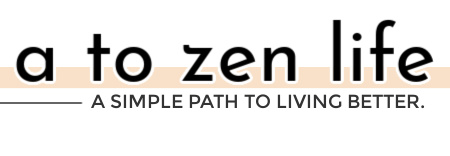Do You Want a Minimalist Aesthetic or a Minimalist Lifestyle? (Find Out!)
This post may contain affiliate links for your convenience. That means that if you make a purchase, I will receive a small commission at no extra cost to you. Read more here.
The fact that minimalism is open to personal interpretation is one of its many charms. Ask ten different people the definition of minimalism and you are likely to get ten very different answers, with some focusing on the minimalist aesthetic and others honing in on the minimalist lifestyle aspect.
You may find yourself wondering:
- do you have to own less than 100 items to call yourself a minimalist?
- does becoming a minimalist mean you have to dress in only white, black, or pastels?
- will the minimalism police come and take you away if you have the absolute AUDACITY to — gasp — buy something? (The HORROR!!!)
Unclutch those pearls (if you haven’t decluttered them already) and take a deep breath. Minimalism can mean all of those things and none of them at the same time.
The truth is, what matters more than someone else’s definition of what does or doesn’t qualify as minimalism is to define what you are looking to achieve by becoming a “minimalist”!
Confused?
Let’s explore your minimalism goals and aspirations in a little bit more detail to answer this question: are you more attracted to a minimalist aesthetic or to a minimalist lifestyle?
Here’s how to figure out if you want the look or the lifestyle.
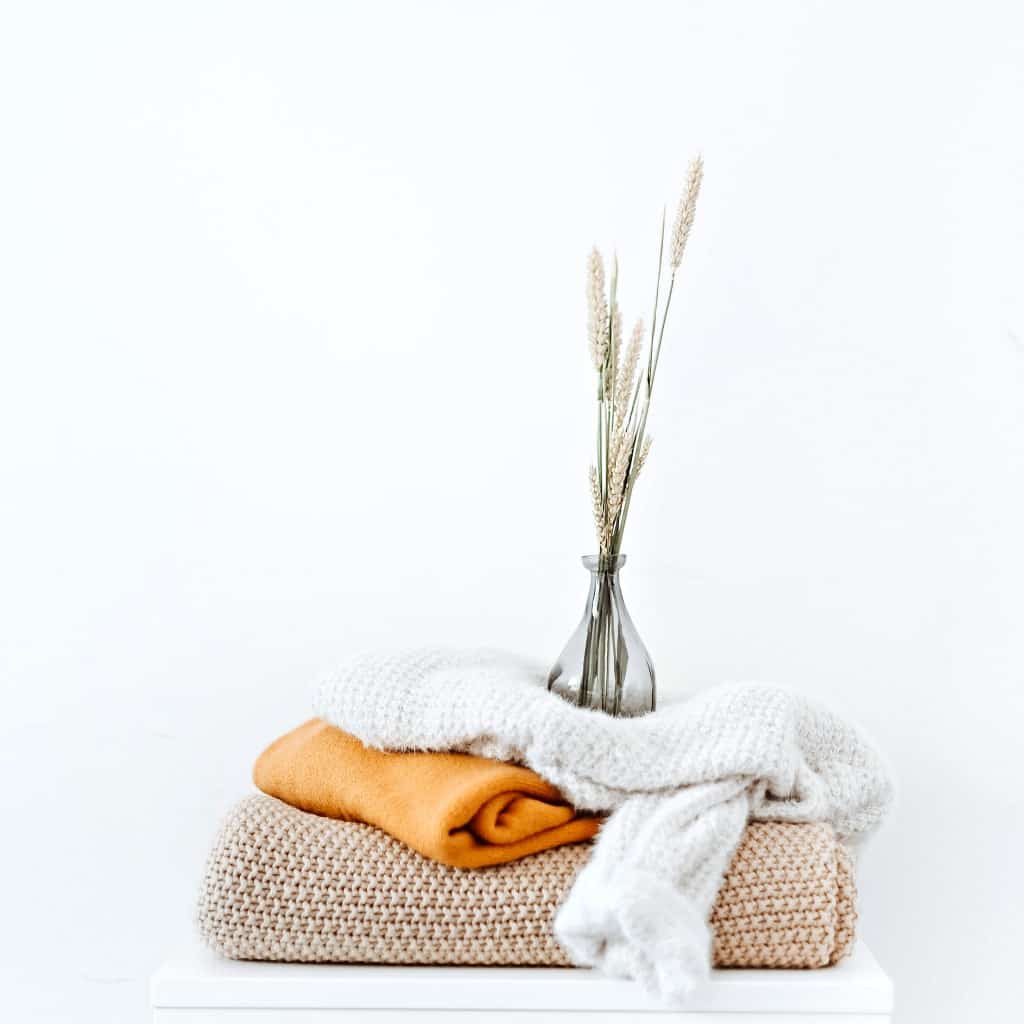
What Is a Minimalist Aesthetic?
Aesthetic minimalism is becoming increasingly popular across social media and in homes all around the world.
Instagram is bursting with aesthetic minimalism-related hashtags at the time of this writing, including:
- #minimalisttattoo – 355,242+
- #minimalisthome – 278,419+
- #minimaliststyle – 579,497+
- #minimalistdecor – 108,717+
- #minimalistwardrobe – 79,190+
In the home, a minimalist aesthetic will emphasize reducing visual clutter and creating a clean and harmonious environment, with a neutral color palette, bright spaces, and maybe a succulent here or there for good measure.
That means allowing simple beauty to shine via generous natural lighting, large windows, modern features, and lots of white.
These rooms often feel airy and create a calming sensation when you look at them. In an aesthetic minimalist home, you will surely notice how everything is bright, spacious, and clutter-free.
However, a minimalist aesthetic is not solely confined to home decor! You can also use the principles of a minimalist aesthetic to curate a minimalist wardrobe.
In fashion, people will wear fewer accessories and dress in classic, neutral tones. The concept of a capsule wardrobe like the one pictured below fits perfectly with a minimalist aesthetic.
Let’s take a look at some more ways you can add an aesthetic minimalist style to any space; you can also read this post for more details and a handy checklist to decorate your space like a minimalist
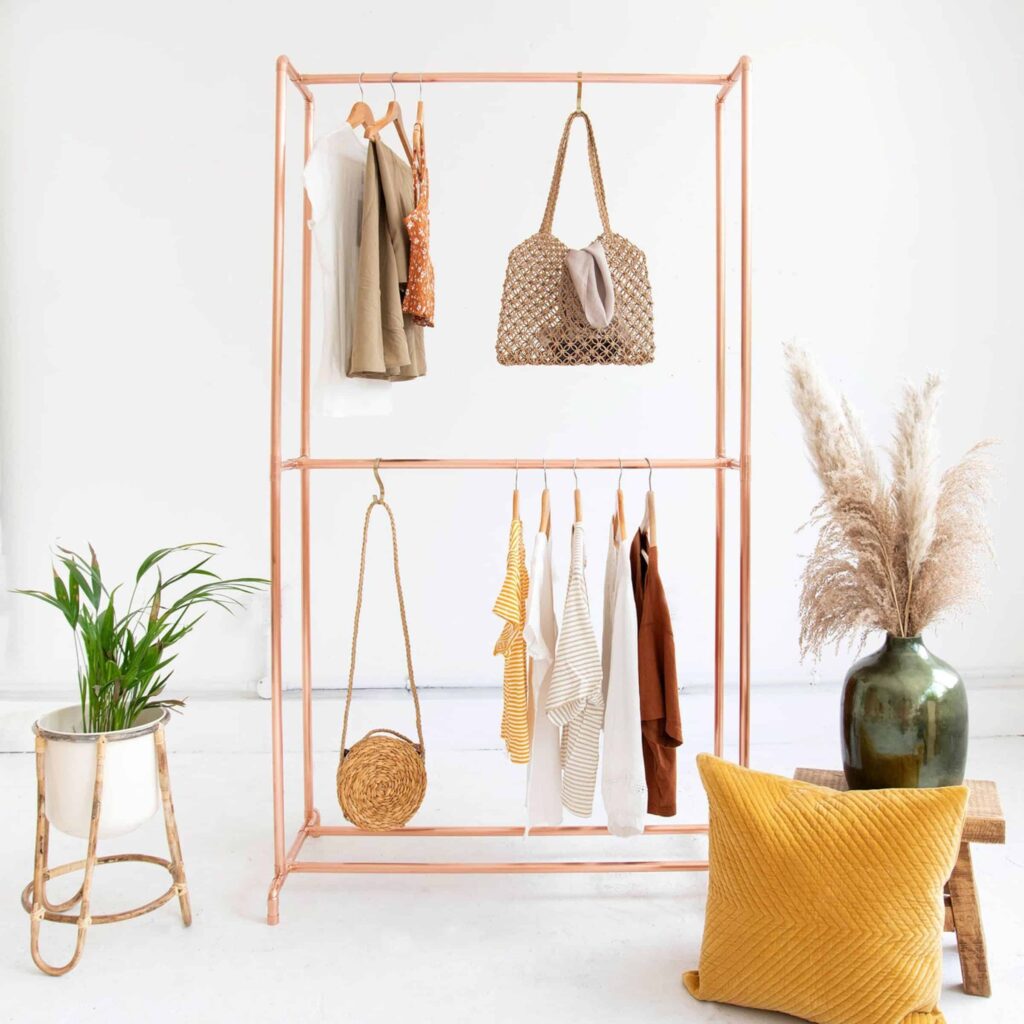
See copper double wardrobe @LittleDeerInteriors
How to achieve an aesthetic minimalist style
No matter if you are thinking of decorating your home or adorning your body, the core principles of a minimalist aesthetic remain the same.
1. Reduce visual clutter
If you find a pile of things just sitting out, put everything away. If you can’t find a place to store what you own, you probably own too much stuff.
The goal is to have clean spaces free from any visual clutter. Imagine perfectly dust-free countertops, desks, and shelves, without any piles of clutter taking up space.
2. Embrace empty space
A minimalist aesthetic is all about the empty space.
Bookshelves should have fewer books and surfaces should be free of knick-knacks and appliances. Coffee tables are clear and rooms are not stuffed with furniture.
The beauty is in the spaces that aren’t being taken up by stuff.
3. Apply a neutral color palette
Minimalism uses lots of white, neutrals, and earthy tones.
Think tan, black and white, and greys. Yes, you can add splashes of colors, but do so very intentionally and in limited amounts.
Some minimalist rooms will feature a bouquet of flowers as the main color feature. Others might add a single painting on the wall. Everything is well thought out with lots of neutral colors.
4. Add a few natural accents
The key here is “a few.”
The minimalist aesthetic only uses a few very well-placed accents, with a focus on modern pieces that incorporate nature.
A bouquet of flowers can add a subtle pop of color, while monstera, succulents, and banana leaf plants are a popular way to add a splash of green to brighten up your minimalist home decor.
You can also add rugs made from natural textures, like jute, and a blanket with earthy fibers.
5. Choose aesthetic storage solutions
When it comes to storage, the minimalist aesthetic motto is,
Out of sight, out of mind
When you can, try to keep storage completely hidden.
If you live in a smaller home and storage space is limited, choose storage items that are visually clean such as matching wicker baskets, a lovely stand-alone capsule wardrobe in wood or copper, or a modern dresser with straight lines that blend seamlessly into the room.
GET INSPIRED: Here are 45 top-selling organizing products that can tidy up every square inch of your home.
What is a minimalist lifestyle?
Now let’s chat about minimalism, and how it differs from the minimalist aesthetic.
Minimalism is a way of living that truly believes in simplicity and living with less.
Whereas a minimalist aesthetic only focuses on the visual aspect of minimalism, a minimalist lifestyle is a complete mindset shift, a “less is more” way of thinking about how you value your life and the things in it – and put minimalism to use practically in your daily activities.
A minimalist lifestyle is about living with what you need and brings value to your life, no more and no less.
(This is why no two minimalists are alike.)
We all have different needs and value different things — what I place a priority on as a minimalist mother might be very different than what another individual would emphasize as a single 20-something
At the end of the day, there isn’t one set of rules that everyone has to follow to practice minimalist living. It looks different for each person and family.
It’s more about the overall process of identifying what you value the most and removing anything that doesn’t fulfill that role.
Minimalism is mostly about the freedom of letting go of things that weigh you down.
It’s freedom from clutter and junk. Experiencing more free time since you don’t have to tidy and maintain as many items. It’s can also lead to financial freedom when you escape society’s endless consumeristic cycle.
Minimalism is the intentional promotion of the things we most value and the removal of anything that distracts us from it.
Joshua Becker
FIND OUT MORE: 18 Minimalism Books That Will Transform Your Life in 2021
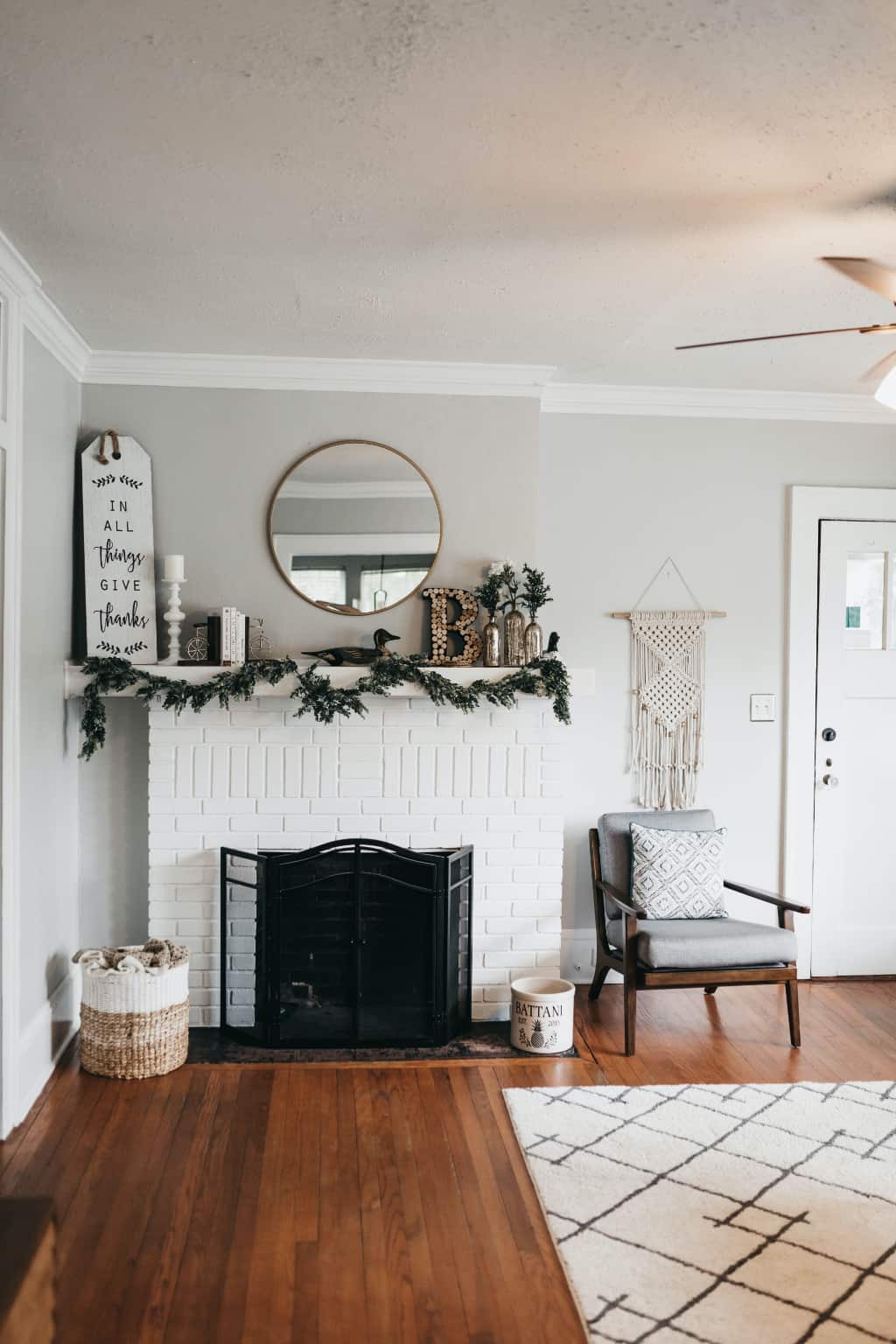
How do I start living a minimalist lifestyle?
If you are attracted to the idea of a minimalist lifestyle, here are some ways to get started. It’s easy and so incredibly freeing!
You can read more about the science-backed beneftis of minimalism by reading this post here, but trust me – you are going to love it!
1. Consider your goals
A good place to start your minimalism journey is by asking yourself what you want to achieve by practicing minimalism.
Here are a few ideas of minimalist goals people have (you might have a few of these too):
- Be content with less stuff
- Save money
- Travel more with less luggage
- Raise happier, smarter, and more creative children
- Be happier and less stressed
2. Start decluttering
Now that you know what your goal is, go through your house – room by room – and start to get rid of things that you don’t need.
Remember, minimalism is about intentionality.
You should find ways to either use or display every single thing you keep.
You don’t use it, get rid of it. Today.
3. Donate, sell, or recycle your clutter
After you finally finish decluttering, try to find eco-friendly ways to get rid of your clutter.
Not only will this help reduce environmental waste, but you can also offset any feelings of financial or emotional guilt you may feel by getting rid of useful items.
Chances are, you own a lot of stuff that isn’t broken and can still be used (and loved) by other people.
A word of caution if you decide to sell – try and get rid of your clutter quickly. The longer you let it sit around, the more tempted you may be to “raid” your discard pile.
Set a time limit and then make a commitment to donate the items if they haven’t sold by then.
💰 FREE MONEY: I was making $1,000+ a month by selling old stuff in between my kids’ naptimes – here’s how!
4. Give everything a “home”
After you have finished decluttering, look at what you have left.
Give each item a place where it belongs. Everything you own should have a home – this is another one of the core concepts of minimalism.
You should be able to look around your house and everything should have its own place.
If something doesn’t have a home yet, give it one. Establish a place in a drawer or shelf where it can go when you are done using it.
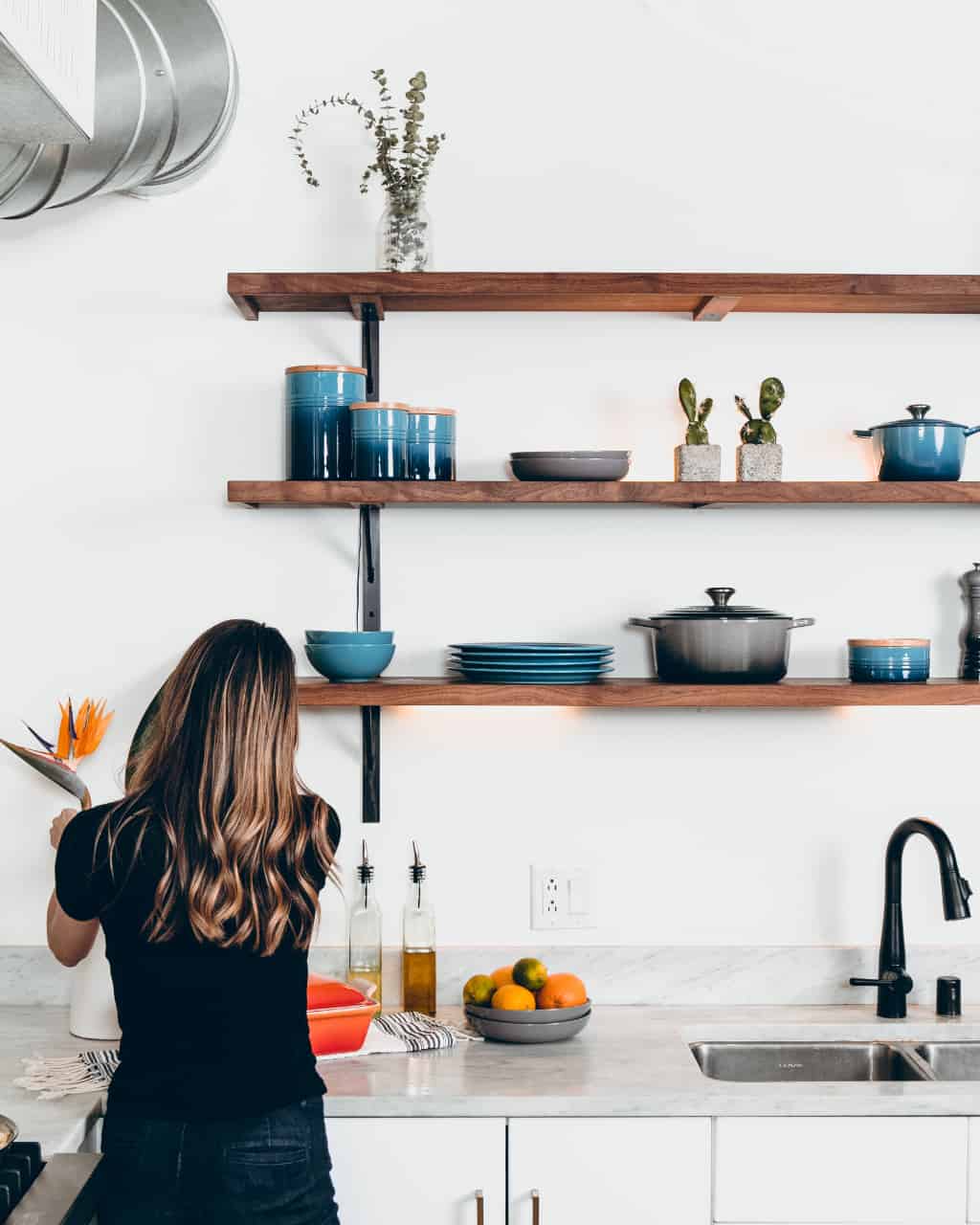
5. Shop intentionally
Before you buy anything else, make sure it aligns with your values and supports them. This will eliminate impulse buys and help you save money and space
(This also means you should have a place for that item in mind before you buy it.)
When you shop mindfully, everything you buy will have a specific purpose and reflect your family’s values.
Take your time before buying things to make sure it’s what you need.
Remember, minimalism isn’t necessarily about refraining from shopping or giving it up. It just means that you stop buying things that you don’t need or won’t use.
6. Free your time & money
Don’t just declutter your stuff, do these same actions with your time and money too.
Is your schedule booked with activities that don’t bring you joy? Cut some of them out.
Do you spend money on things that you don’t use? Cut them out of your budget.
When you have more time to spend on the things that matter most to you, you will feel happier! The same goes for your money.
Minimalism is about priorities. Set them and keep them – with your stuff, time, and money.
7. Take the 30-Day Minimalism Challenge
If you want to test the waters of minimalist living, why not try the minimalism challenge; it’s split into three parts:
- Physical Clutter: Days 1-10
- Digital Clutter: Days 11-20
- Mental Clutter Days 21-30
You will also receive:
- A 30-Day Minimalism Challenge Printable PDF
- Two optional modification levels (do more or less depending on how much time you have – even 5 minutes is enough!)
- Additional resources and tips
- Access to even more amazing free printables!
If you are ready to start and want the encouragement, go to this blog post to find out more.
Minimalist aesthetic versus lifestyle why not do both?
There’s always a third option, of course – pick and choose what you like from both the minimalist aesthetic and minimalist lifestyle principles and tailor your home and habits accordingly!
When it comes to minimalism, it’s all about what you value so choose what you like and forget the rest.
In the end, the most important thing is that you live your best, most authentic minimalist life!
